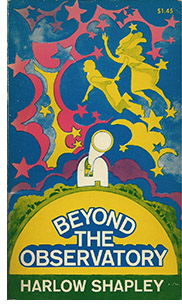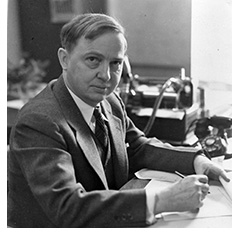Please Consider Becoming a Harlow Shapley Visiting Lecturer!
Gina Brissenden American Astronomical Society (AAS)
The AAS pays the lecturer’s travel expenses regardless of the type of institution where the Shapley Lecture will be given. Institutions are requested to pay a nominal $300 contribution in support of the Shapley Lectureship fund. However, this contribution can be reduced or eliminated depending on the needs of the institution, and the AAS generally waives the contribution for community colleges and minority-serving institutions.
Why Does the AAS Want You to Become a Shapley Lecturer?
Our goal is to double the number of Shapley Lectures being offered each year, but we don’t have enough Shapley Lecturers to do it. More importantly, we want the pool of Shapley Lecturers to represent the full and vibrant spectrum of our diverse membership! Finally, we want Shapley Lecturers who are eager to proactively seek out community colleges and minority-serving institutions to visit and form long-term relationships with. Only full members of the AAS are eligible to become Shapley Lecturers.
What Are You Committing to as a Shapley Lecturer?
It’s unlikely you’ll be asked to make a Shapley visit more than once a year, and we’ll work around your schedule. The one constant of all Shapley visits is the Shapley Lecture: a free talk open to the general public in the institution’s surrounding area. You’re also encouraged to engage in as many of the following types of activities as you can during your 2- to 3-day visit:
- give a scientific colloquium
- guest teach one or more classes
- visit one or more K-12 schools
- meet with the dean
- meet with the department chair
- attend an informal gathering with students
- attend an informal gathering with faculty and instructors
- be interviewed by the campus radio or television station
What Would You Talk About as a Shapley Lecturer?
Pick a topic, or two, or three! When colleges and universities request a Shapley Lecture they often ask for specific topics, such as cosmology, extrasolar planets, black holes, etc. But we also receive requests related to particular instruments, women in astronomy, the history of astronomy, and so on. We also encourage you to talk about astronomy-related careers and about bringing more astronomy into non-astronomy courses, such as physics and general science. What you choose to talk about will depend on the context of your visit and on what your host institution wants to hear about.
How Do You Become a Shapley Lecturer?
This is where we need your help reaching out to community colleges and/or minority-serving institutions. We know that many AAS members have already formed strong relationships with faculty and others at these types of institutions or are eager to do so.
We invite interested full members to fill out our online Shapley Lecturer Application; you’ll need to sign in to our website to access the form. The application includes space to list five community colleges and/or minority-serving institutions you’re interested in visiting over the next several years. If you’ve already established relationships with people at these institutions, awesome! You can provide their contact information on the online form. If not, don’t worry, we’ll help out!
While you’re filling out the form, you’ll also be asked to provide three to five topic areas you’re interested in talking about, along with a short description of yourself and what you study. Finally, we’ll want a mug shot (it doesn’t have to be professional and formal) to use in promotional materials; you can upload a photo with your application or provide one later. These items will further help us in reaching out to the institutions you’d like to visit, as well as help us promote your visits once they’re scheduled.
How Do You Find Community Colleges and Minority-Serving Institutions?
If you need help locating community colleges and/or minority-serving institutions, we’ve got some resources for you:
- The American Association of Community Colleges (AACC) has an interactive, searchable Community Colleges Locator map
- The Center for Astronomy Education (CAE) also has a list of accredited community colleges that offer some type of astronomy course
- The US Dept. of Education has a list of minority-serving institutions (based on 2006 enrollment data)
In addition, if you search for an institution’s demographics — often summarized in a “quick facts” sheet — and find the sum of their minority student population above 50%, that institution is considered a minority-serving institution.
Who Was Harlow Shapley?
Harlow Shapley (1885–1972) served for more than 30 years as director of Harvard College Observatory. He is most notably remembered for his work in identifying the center of the Milky Way and determining our solar system’s location in the galactic outskirts. He strived to bring astronomy to the public through authoring several popular books and was a cofounder of the United Nations Educational, Scientific and Cultural Organization (UNESCO). In his honor, the Harlow Shapley Visiting Lectureship was created at the American Astronomical Society with funding from the National Science Foundation and the Harlow Shapley Visiting Lectureship Endowment Fund.
Do You Have Additional Questions?
Please contact me! And thank you for considering becoming a Shapley Visiting Lecturer!



